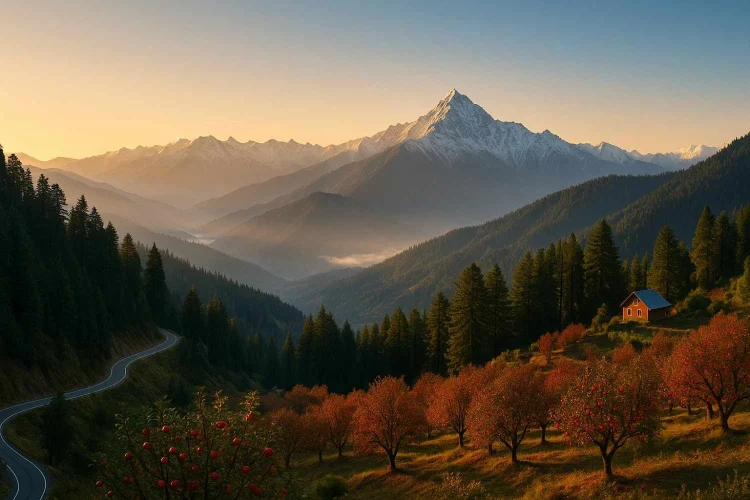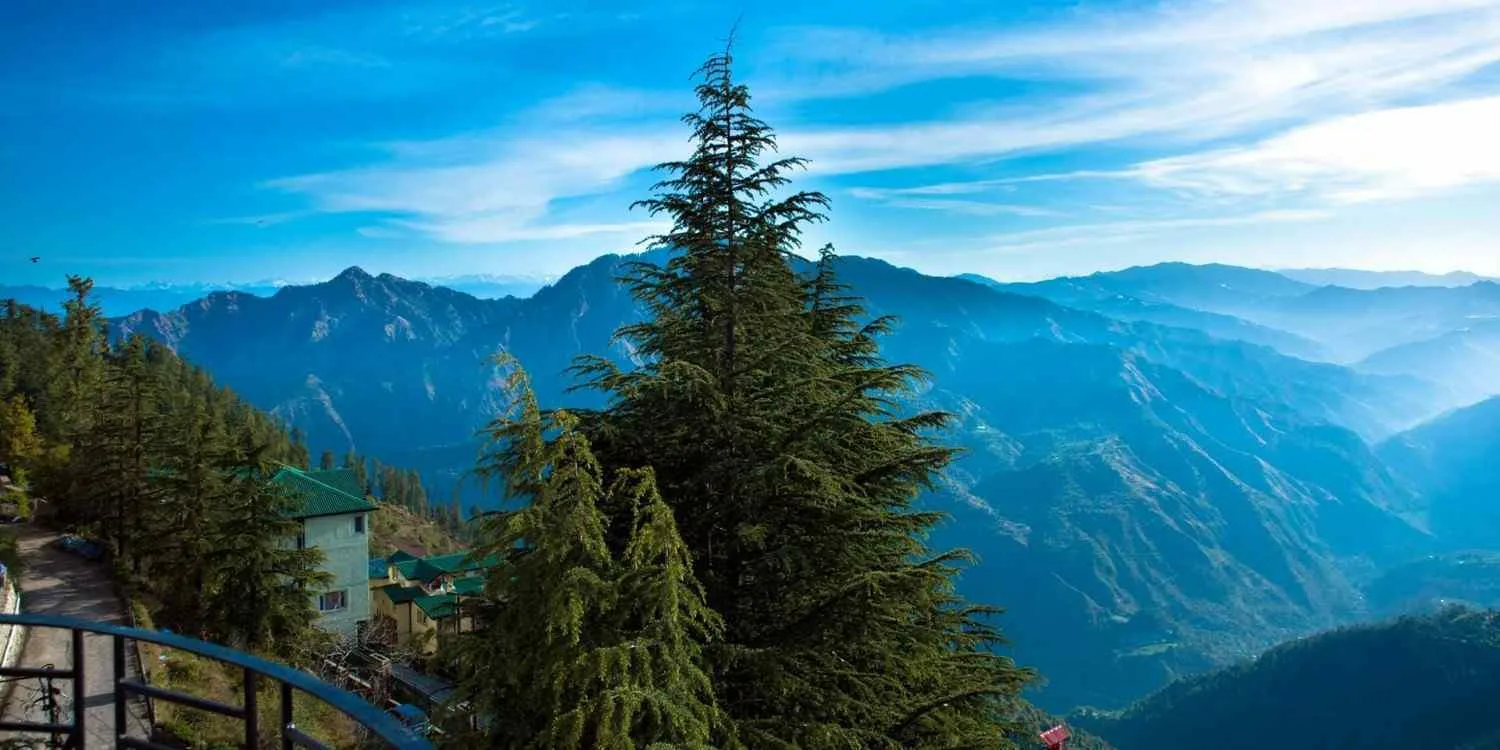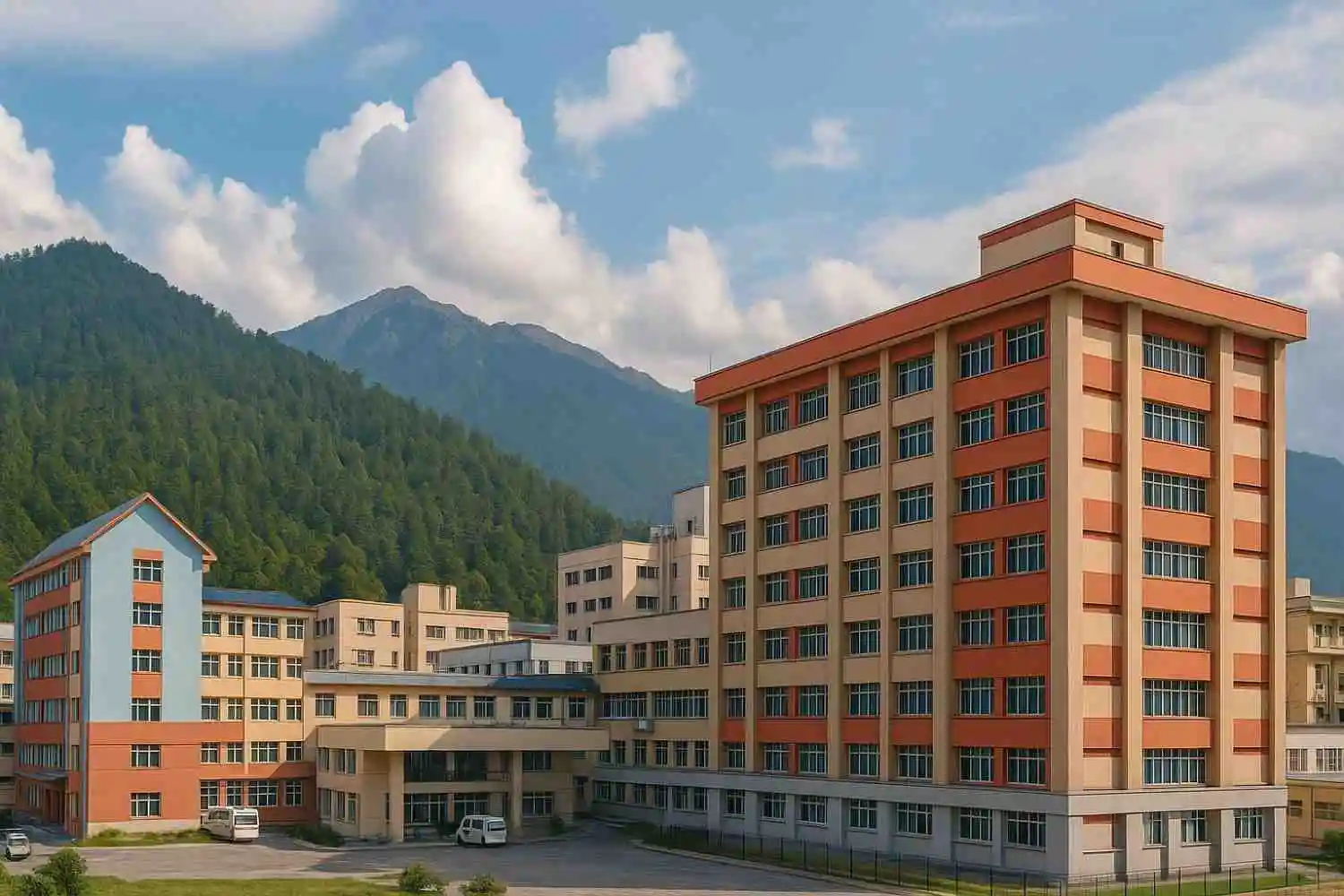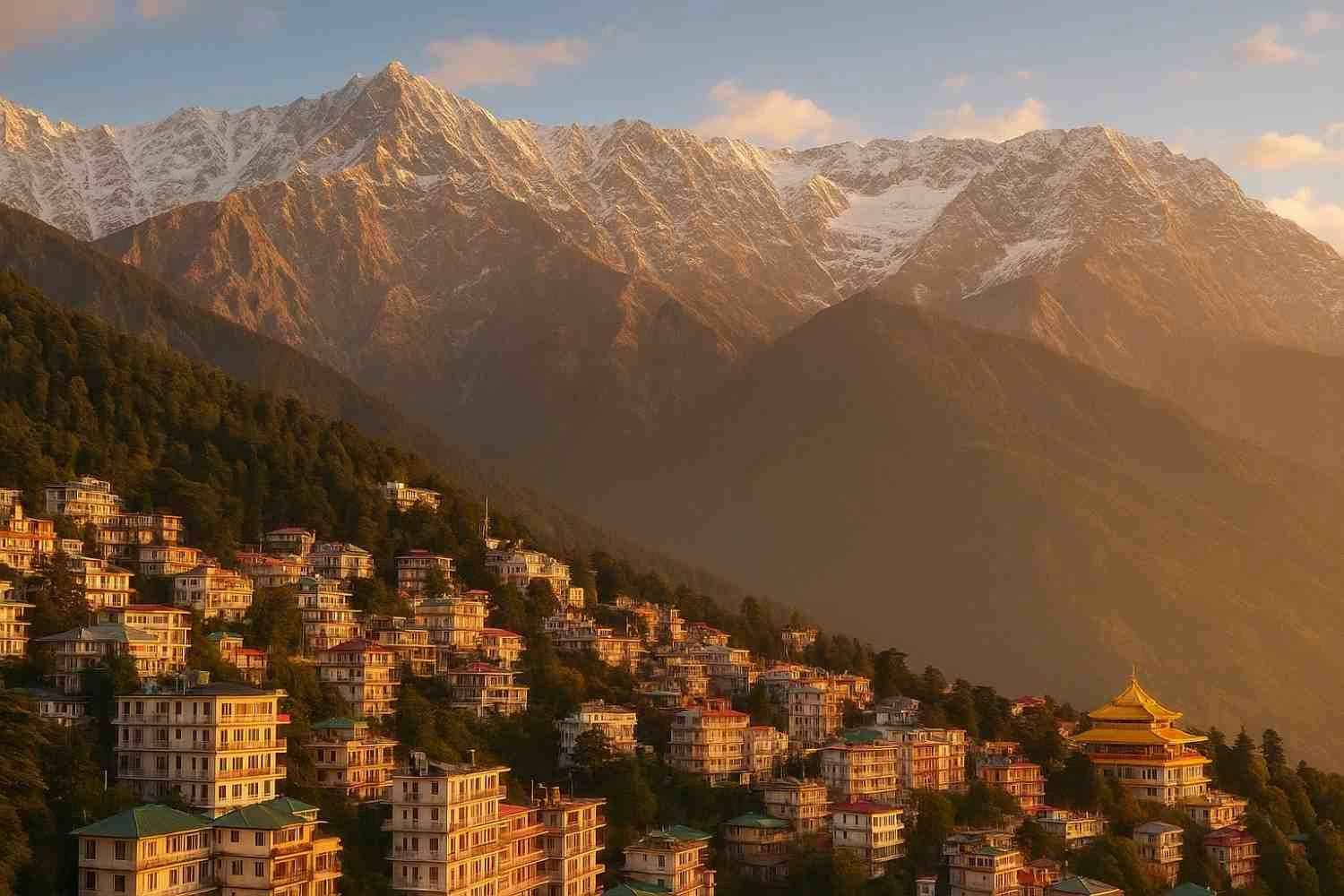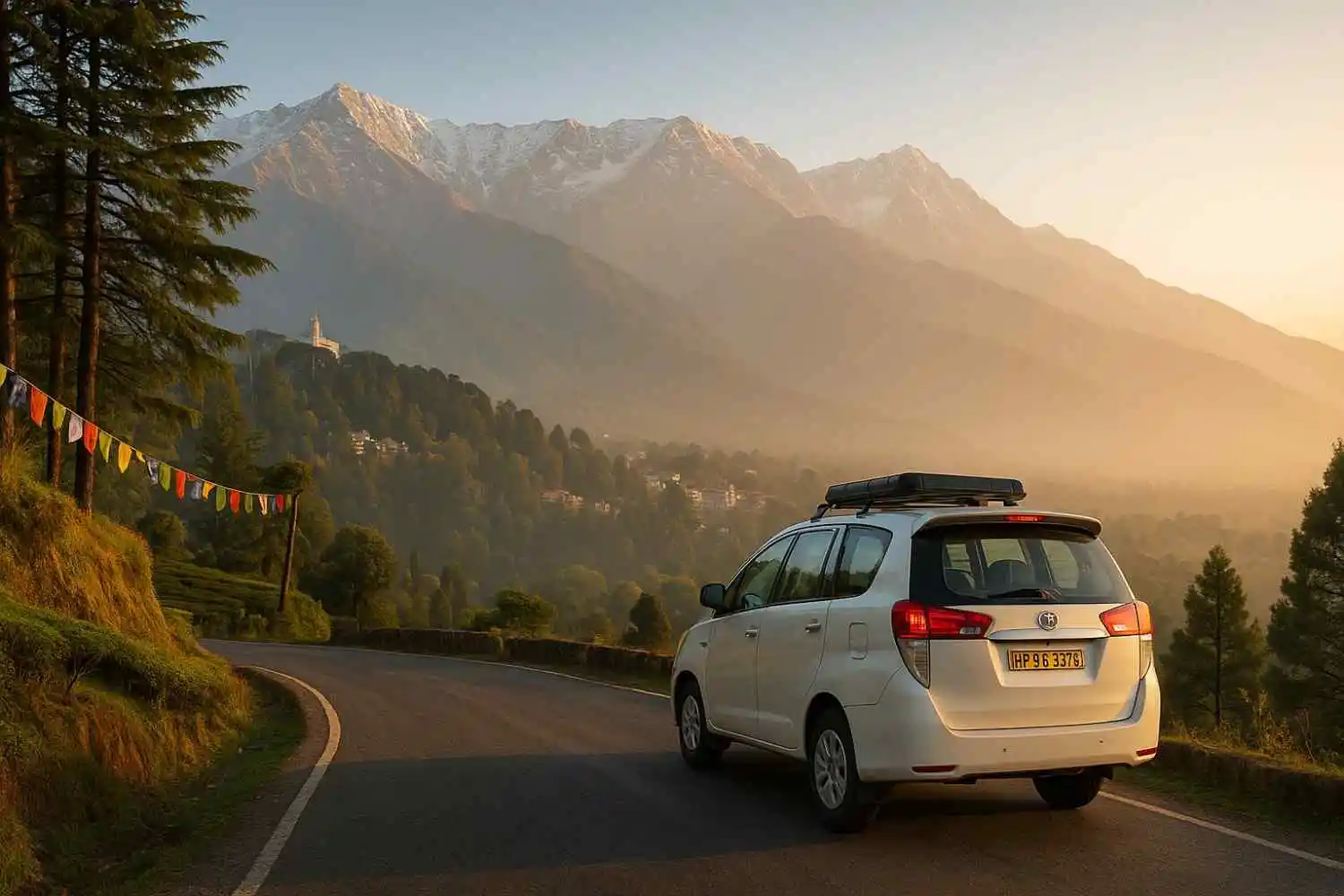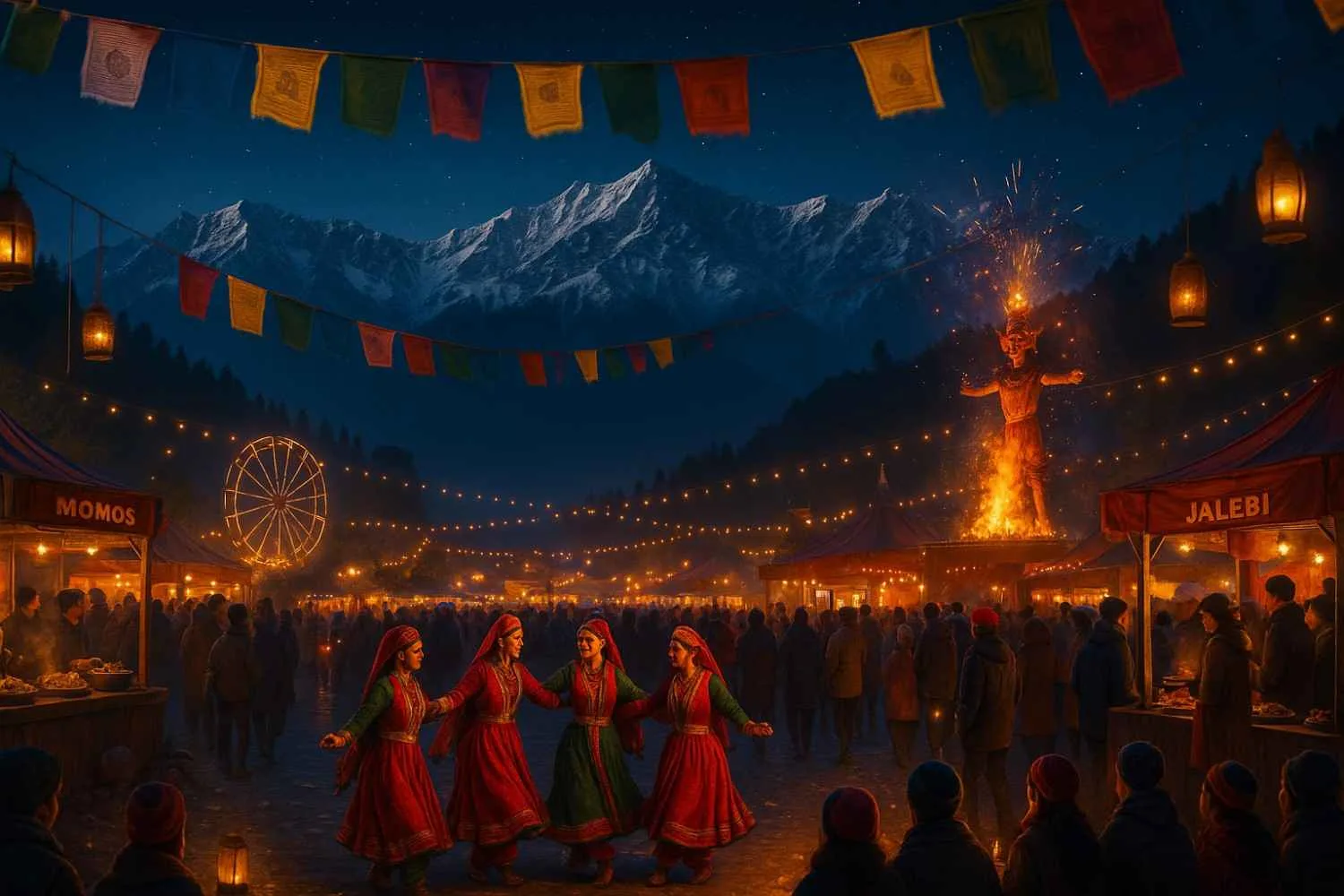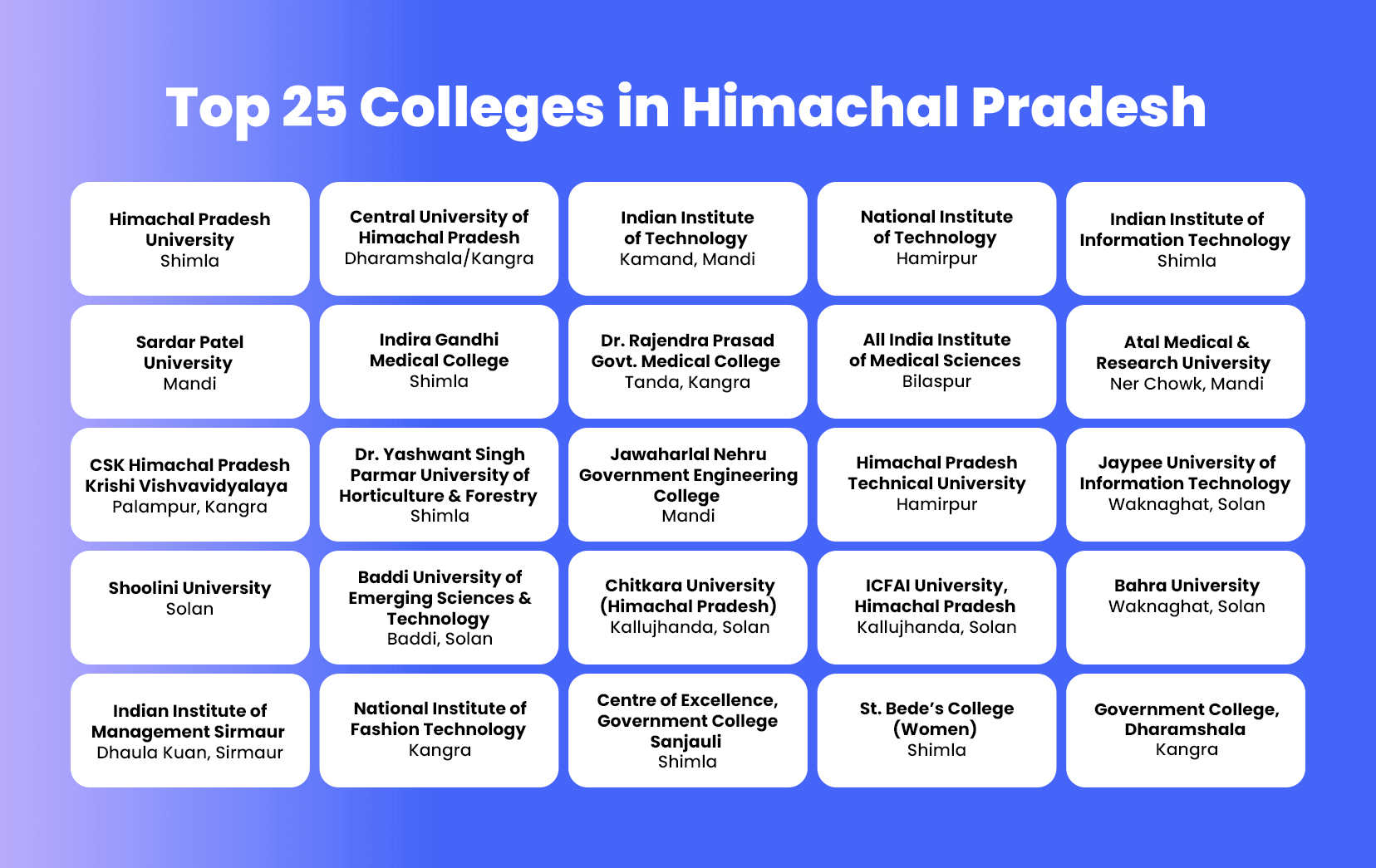Narkanda, Himachal Pradesh, is the kind of mountain town that quietly steals your heart—high-altitude air tinged with cedar and apple, winding roads that open to views of serrated ridgelines, and winter slopes that turn powdery white. Perched in the Shimla district at roughly 2,700 meters above sea level and about 60 km from Shimla, Narkanda offers a rare balance: the serenity you crave and just enough activity to keep every day interesting. hpshimla.nic.in+1
Think snow-covered slopes, Narkanda apple orchards, and soft-adventure days that slide easily from a Hatu Peak trek to a steaming cup of local cider at sunset. There’s an old-world charm here—partly from the historic Hindustan–Tibet Road that threads through town, partly from the orchards and hamlets rolling down the hillsides, and partly from that unhurried rhythm mountain places seem to hum with.
In this definitive Narkanda travel guide, you’ll find: how to get there, the best time to visit Narkanda, what to see and do (from Narkanda skiing to lakes and temples), where to stay (luxury Narkanda resorts and cozy Narkanda homestays), local cuisine, practical tips, sample itineraries, and answers to the most-asked questions.
Where is Narkanda Located?
Narkanda sits in the upper Shimla region on the legendary Hindustan–Tibet Road, today’s NH-5. This artery runs east from the plains, past Shimla, over Theog and Narkanda, and onward toward Rampur and the Sutlej valley—eventually tracing the road toward the high border passes. That strategic location makes Narkanda feel both remote and well-connected. Wikipedia
- Elevation: ~2,708 m (8,885 ft)
- Approximate coordinates: 31.26° N, 77.45° E (DMS ~31°15′28″ N, 77°27′37″ E)
- Nearby hubs: Shimla (60–65 km), Kufri (en route from Shimla), Thanedar (orchards), and Hatu Peak rising above the town. Trodly+1
If you’re looking at a map, set a pin just beyond Theog on NH-5. As the road climbs and the forest deepens, you’ll crest a ridge—and there Narkanda unfolds, encircled by deodar and fir, with apple country spreading toward Thanedar and Kotgarh.
How to Reach Narkanda
1. By Road
- Shimla → Narkanda: ~60–62 km via NH-5; most travelers cover it in about 2 hours, depending on stops and weather. Expect a scenic drive past Kufri and Theog. HRTC and private buses run this corridor regularly; taxis are easy to hire in Shimla. Yatra.com+2Yatra.com+2
- Pro tip: The road rides the ridge for long stretches—plan photo breaks. Landslides are possible in the peak monsoon; see tips below.
2. By Rail
- Nearest station: Shimla Railway Station (the terminus of the UNESCO-famed Kalka–Shimla “toy train”). From Shimla, continue by cab or bus to Narkanda (roughly 60 km). It’s slower than a highway bus from Kalka, but the toy-train experience is unique. Holidify
3. By Air
- Nearest airport: Shimla (Jubbarhatti)—roughly ~78–85 km from Narkanda by road; availability and schedules can be seasonal. Many travelers also consider Chandigarh for wider connectivity. The Hosteller+2honeymoonpackagesmanali.in+2
Road tip: The Shimla → Narkanda drive itself is a highlight—mountain amphitheaters on your right, bands of deodar and spruce on your left, and occasional windows to distant snow peaks when the air is crisp.
Best Time to Visit Narkanda
Narkanda’s seasons each bring a different personality. Use this at-a-glance guide to align your plans with your style.
| Season | Months | What it’s like | Travel highlights |
| Summer | March – June | Cool, clear mornings; mild afternoons; fresh mountain breeze | Narkanda sightseeing, easy hikes, Hatu Peak trek, village and orchard walks |
| Monsoon | July – September | Lush green, misty afternoons, showers; occasional road blocks/landslides | Moody photography, forest walks between spells; be flexible |
| Autumn & Winter | October – February | Crisp fall days easing into snowfall mid-winter | Narkanda skiing, snow play, sunrise views from Hatu |
- Ideal for snow: November–February (often best in Jan–Feb).
- Ideal for nature walks & views: April–June (and post-monsoon October).
- Skiing window: December to March in a typical year; local slopes and HPTDC lessons operate when snow allows. boonies.in+1
Top Tourist Attractions in Narkanda
1) Hatu Peak (≈3,400 m)
The undisputed crown of Narkanda, Himachal Pradesh, Hatu Peak rises to about 3,400 meters and commands sweeping 360° views on a clear day. The Hatu Mata Temple—a beautiful wooden shrine—sits at the summit, and meadows like Jau Baug roll just beyond. You can drive most of the way (narrow, steep road; local cabs preferred) or trek from town for a satisfying half-day. Photographers love sunrise here; snow transforms the approach into a storybook ridge. Incredible India+1
Hatu Peak trek basics: Expect a moderate incline, deodar/oak/mixed forests, and occasional snow/ice in winter. Allocate 2.5–4 hours round-trip if hiking from the Narkanda side (longer with photography breaks). AllTrails.com
2) Tannu/Tani Jubbar Lake
A calm, oval lake ringed by pines, Tani (Tannu) Jubbar lies ~10–12 km from Narkanda toward Thanedar. Bring a picnic, do an easy circuit, and wait for the water to mirror the trees in the late afternoon. It’s a relaxed half-day, perfect with kids or after a morning hike. Travel.in+1
3) Apple Orchards
Welcome to Himachal’s apple belt. Late August–October is harvest time: orchards glow red; roads hum with the season’s bustle. Thanedar near Narkanda is particularly storied for the “apple revolution” led by (Satyanand) Samuel Stokes in the early 20th century—many travelers visit farmstays here to understand the region’s orchard culture. The Times of India+1
4) Mahamaya Temple (Kacheri)
About 7 km from Narkanda, this temple—set on a quiet hilltop—honors Goddess Kali. It’s serene, photogenic, and usually crowd-free outside weekends and festivals. Combine it with a loop to Apple villages for a mellow day. Holidify+1
5) Thanedar & Kotgarh
A short hop from Narkanda, these villages are synonymous with apples: old estates, neat terraces, and homestays where you can sip juice pressed steps from where it grew. If you’re chasing harvest vibes, plan a night out here to linger among orchards. The Times of India
Things to Do in Narkanda
• Trek to Hatu Peak:
Forest start, ridge finish, big views—the classic. Start early for golden light and lighter traffic. In winter, check road and snow conditions; microspikes can help on icy patches. hptdc.in
• Go skiing in winter:
Narkanda is among India’s earliest ski destinations. In good snow years, slopes open Dec–Mar, with HPTDC often running lessons and rentals under certified instructors. Beginners get gentle gradients; intermediates get satisfying runs with bonus vistas. boonies.in+1
• Walk through orchards & taste cider:
Many stay arrange seasonal orchard walks or tastings. Be respectful—always ask permission and stick to paths. Late summer and autumn are best.
• Camping & bonfires:
Some operators offer forest-edge camping. Choose eco-sensitive setups that follow forest rules (no loud music, no litter, responsible fire use) and practice Leave No Trace.
• Nature & landscape photography:
Think cedar trunks in afternoon slant, mist slipping between ridges, and starry skies on moonless nights. Winter adds snow-textured foregrounds; monsoon adds dramatic clouds.
• Day tripping:
Use Narkanda as a base to explore Thanedar/Kotgarh (orchards), the Sutlej-side vistas near Rampur, or even plan a long day to Sarahan if you’re extending your Kinnaur route later.
Where to Stay in Narkanda
You’ll find everything from luxury resorts with valley-facing decks to family-run cottages tucked into orchards. When evaluating places to stay in Narkanda, consider winter heating, vehicle access (some lanes get steep/icy), and proximity to trails.
1. Luxury & Upscale Resorts
- Tethys Himalaya Ski Resort, Narkanda: Colonial-style touches, apple-belt setting, and easy access to local slopes and the Hatu side. tethyshimalaya.com+1
- Agyaat Vaas (near Hatu): A wilderness-flavored retreat near the Hatu forests; great for quiet stays and guided outdoor days. agyaatvaas.com+1
- Echor Backwoods Villa, Narkanda/Matiana: Boutique villa vibes with mountain views—good for couples and families seeking calm. echor.in+1
2. Mid-range & Boutique
Charming lodges and villas dot the ridge between Narkanda and Matiana. Expect warm hosts, fireplaces, and decks that beg for slow breakfasts.
3. Budget Hotels & Narkanda Homestays
Simple rooms, genuine hospitality, home-cooked meals, and first-hand tips on trails. If “local life” is your thing, homestays win.
Booking pointers:
- If you’re snow-hunting (Nov–Feb), book early—weekends fill up fast.
- Confirm heating (room heaters, electric blankets) and parking.
- Ask about trail access and sunrise/sunset viewpoints near the property.
- For sustainability, pick places with refill stations, waste segregation, and minimal single-use plastic.
Narkanda Local Cuisine
Himachal’s mountain food is thoughtful and warming—perfect after a chilly trek.
- Dham: A festive platter typically built around rice, madra (yogurt-based chickpea or rajma curry), khatta, and dals—ask your stay if they can arrange a Dham-style meal.
- Siddu: Steamed wheat buns with savory fillings—add ghee and green chutney and thank us later.
- Babru: Think Himachali kachori—crisp with a spiced lentil filling.
- Madra: The creamy, spiced legume dish that shows up both in Dham and homestyle menus.
- Apple everything: Fresh apple juice, cider, jams, pies—when you’re sitting in the orchard belt, it’s only right.
- Cafés & dhabas: Expect chai, Maggi, parathas, thukpa here and there, and classic mountain staples. In winter, hot gulab jamun or halwa hits different.
NarkandaTravel Tips
• Pack for altitude and swings: Even in summer, evenings get chilly. In winter, layer up—thermal base, fleece, insulated jacket, beanie, gloves, wool socks, and shoes with good grip (microspikes help on icy mornings).
• Monsoon caution: July–September can bring slides. Keep buffers in your plan and check local advisories before driving. NH-5 is the hill lifeline, but it’s still a mountain road. Wikipedia
• Snow season logistics: If snowfall is active, expect slower drives and occasional closures on the last stretch to Hatu. Carry cash (ATMs can be limited), start early for treks, and confirm fuel.
• Responsible travel: This is orchard and forest country. Don’t pick fruit without permission, pack your trash out, avoid loud music outdoors, and respect local customs at temples and village commons.
• Connectivity: Data works along the main ridge; expect patchy signal in forested pockets—download offline maps.
• Health & pace: At ~2,700 m, most travelers feel fine, but go easy on day one, hydrate well, and don’t sprint up Hatu immediately. hpshimla.nic.in
Narkanda Suggested Itinerary
1. 2-Day Trip from Shimla
Day 1:
- Drive Shimla → Narkanda (≈2 hrs). Check in, enjoy a slow lunch with mountain views.
- Tani Jubbar Lake for an easy stroll and reflection shots; loop via Thanedar if time allows (orchard stop in season). Trawell.in
- Sunset viewpoint near your stay; early dinner.
Day 2:
- Hatu Peak trek/drive for sunrise or mid-morning panoramas; linger at Hatu Mata Temple. hptdc.in
- Mahamaya Temple (Kacheri) is on your way back. Post-lunch, return to Shimla. Holidify
2. 3–4 Days (Unhurried)
- Day 1: As above; settle in.
- Day 2: Hatu Peak + Jau Baug meadows; free evening.
- Day 3: Skiing (Dec–Mar)—book a lesson, or spend the day in Thanedar/Kotgarh learning apple stories. boonies.in+1
- Day 4: Slow morning, café crawl, village walk; depart.
Conclusion - Less crowded than its famous neighbor yet no less beautiful, Narkanda Himachal Pradesh is a complete mountain mood: snow in winter, orchards in autumn, blue-sky hikes in summer, and that evergreen peace that settles on you the moment you step out for a forest-rim walk. From the Hatu Peak trek and Narkanda skiing days to temple quiet at Mahamaya and mirror-still frames at Tani Jubbar Lake, it’s a seamless mix of adventure, spirituality, and scenery—with apple-scented stories woven through.
- Travel slow. Hire local guides, respect temple and village customs, carry your trash out, and choose stays that care for the hillside as much as you do. That’s how the magic of Narkanda stays exactly as you’ll find it—calm, crisp, and quietly unforgettable.
- Fast Facts (for planners)
- Road: Shimla → Narkanda ≈ 60–62 km via NH-5 (≈2 hrs). Yatra.com
- Rail: Nearest railhead Shimla (Kalka–Shimla heritage line). Holidify
- Air: Shimla (Jubbarhatti) ≈ ~78–85 km by road; Chandigarh is a common alternative. The Hosteller+1
- Elevation: Town ≈ 2,708 m; Hatu Peak ≈ 3,400 m. hpshimla.nic.in+1
- Coordinates (approx.): 31.26° N, 77.45° E (DMS ~31°15′28″ N, 77°27′37″ E). Travelmath
FAQs
What is Narkanda famous for?
Snowy winters, the Hatu Peak trek, Narkanda apple orchards, and one of India’s earliest skiing hubs—plus quiet, high-altitude vibes close to Shimla. Incredible India
How far is Narkanda from Shimla?
Around 60–62 km by road along NH-5; roughly 2 hours depending on stops and weather. Yatra.com+1
What is the best time to visit Narkanda?
For snow and skiing: Nov–Feb (often best in Jan–Feb). For treks and orchard walks: April–June, and post-monsoon October. boonies.in
Is there snowfall in Narkanda?
Yes—typically in winter, with snow-play and skiing when conditions allow. Incredible India
What are the top places to visit in Narkanda?
Hatu Peak, Tani Jubbar Lake, Mahamaya Temple (Kacheri), and the orchard belts of Thanedar/Kotgarh. Trawell.in+2Holidify+2
What are the best resorts in Narkanda?
Popular picks include Tethys Himalaya Ski Resort, Agyaat Vaas (near Hatu), and Echor Backwoods Villa—spanning luxury to boutique. tethyshimalaya.com+2agyaatvaas.com+2
Can I do skiing in Narkanda?
Yes. When snowfall is adequate (usually Dec–Mar), local slopes operate, and HPTDC often runs lessons under certified instructors. boonies.in
Is Narkanda safe for family trips?
Generally yes. It’s a peaceful ridge town with family-friendly walks and picnic spots. Exercise normal hill-travel caution (slow drives, layers, treks by daylight).
What is the altitude of Narkanda?
About 2,708 meters above sea level. hpshimla.nic.in
